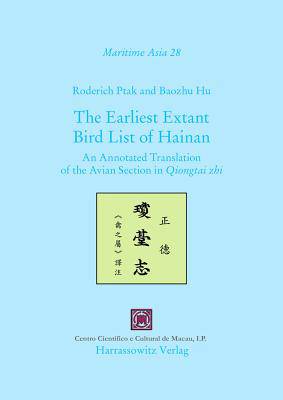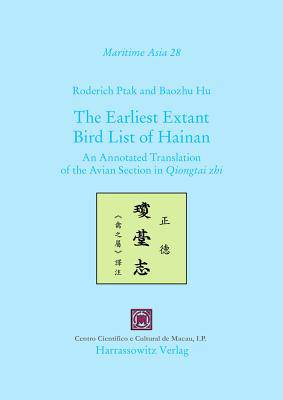
- Afhalen na 1 uur in een winkel met voorraad
- Gratis thuislevering in België vanaf € 30
- Ruim aanbod met 7 miljoen producten
- Afhalen na 1 uur in een winkel met voorraad
- Gratis thuislevering in België vanaf € 30
- Ruim aanbod met 7 miljoen producten
Zoeken
The Earliest Extant Bird List of Hainan
An Annotated Translation of the Avian Section in Qiongtai Zhi
Roderich Ptak, Baozhu Hu
Hardcover | Engels
€ 109,95
+ 219 punten
Omschrijving
Many Chinese local chronicles contain long lists of plants and animals pertaining to a particular region. The earliest extant lists for Hainan appear in the Qiongtai zhi, a work written in the Zhengde period (1506-1521) and preserved in the Tianyi ge collection. These lists are of importance for the natural history of Hainan, which has its own distinct characteristics. The present study is a contribution towards a better understanding of Hainan's avian world. In essence it is a translation of the bird section in Qiongtai zhi, with detailed notes and long comments, mostly of a philological nature. The Qiongtai zhi lists over fifty bird names and in many cases also provides short descriptions and other information related to these animals. Several passages refer to earlier sources, some of which are now lost or only known through scattered citations. The translators discuss all these materials and, where necessary, include references to additional texts, especially to other Hainan gazetteers and works with data on the fauna of Guangdong. One major aim of the present book is to identify traditional bird names in the light of modern taxonomy. Furthermore, in the comment to each entry the translators also seek to throw light on the cultural dimensions associated with the avian fauna of Hainan. This concerns religious, literary, ecological and other aspects as, for example, the use of bird products in medicine and daily life.
Specificaties
Betrokkenen
- Auteur(s):
- Uitgeverij:
Inhoud
- Aantal bladzijden:
- 154
- Taal:
- Engels
Eigenschappen
- Productcode (EAN):
- 9783447103152
- Verschijningsdatum:
- 30/01/2015
- Uitvoering:
- Hardcover
- Formaat:
- Genaaid
- Afmetingen:
- 175 mm x 244 mm
- Gewicht:
- 453 g

Alleen bij Standaard Boekhandel
+ 219 punten op je klantenkaart van Standaard Boekhandel
Beoordelingen
We publiceren alleen reviews die voldoen aan de voorwaarden voor reviews. Bekijk onze voorwaarden voor reviews.








